“We don’t really see this trend ending anytime soon,” said Marci Freede, who opened the Paint Place on the Upper West Side of Manhattan in 2014 and added a second location, in Astoria, Queens, last year.
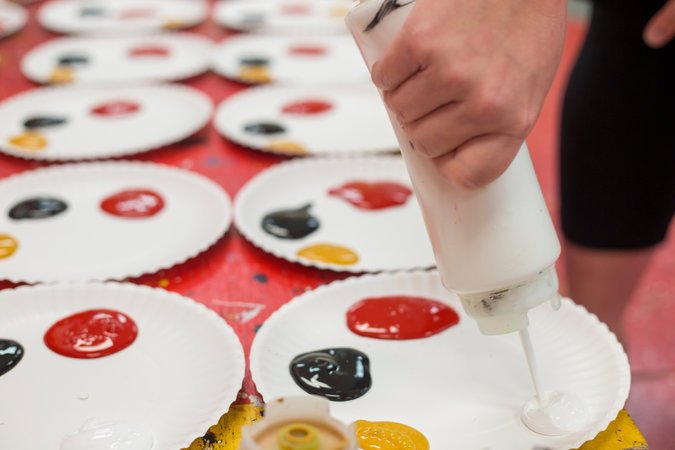
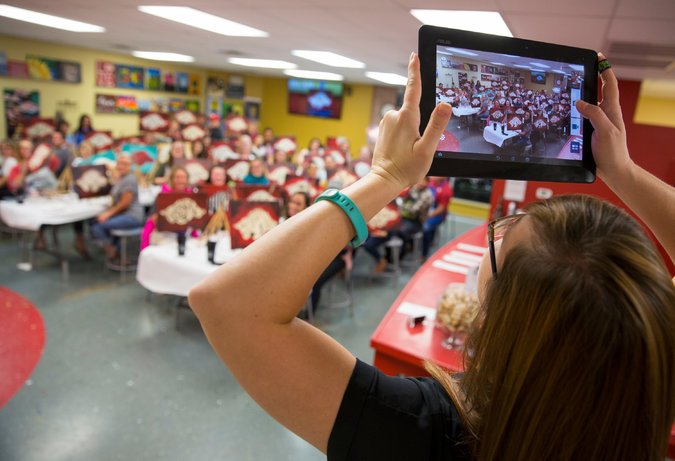
Whether run by franchisees or sole proprietors, the classes have a similar structure: An artist offers step-by-step instructions on how to paint a predetermined image. While they paint, customers enjoy an alcoholic beverage of their choice (or, if they prefer, coffee or water). And when they finish, they get to keep their creations. Classes can cost $35 to $65 a person, depending on location and format.
Cathy Deano, a founder of Painting With a Twist, which is based in Mandeville, La., said that most participants had not done much painting, if any, before taking a class, and that having a few sips of wine helped tame what she called the “white canvas anxiety” that novice artists can feel when starting a painting. “It just relaxes them,” she said.
“I tell my husband, ‘It’s like going fishing,’” said Susan Jean, the proprietor of Painting With a Twist’s Bentonville location. “You drink a little, talk a lot and bring something home.”
Ms. Jean, 59, said she had always wanted to run her own business and had decided on a paint-and-sip shop after taking a class with her sister. She is not an artist herself: “I can’t paint a wall,” she said with a shrug.
She hires local artists to teach the classes, while she and her daughter, Katie Collins, run the business. Some classes are open to anyone; others are geared toward couples or “girls night out” groups. Companies also schedule classes as team-building exercises or fund-raising events.
The paint-and-sip trend has been driven in part by a generally heightened interest in wine, said Ben Litalien, an instructor in the franchise-management certificate program at Georgetown University’s School of Continuing Studies.
Advertisement
Continue reading the main story
But, Mr. Litalien said, consumers were also increasingly being drawn to experiences that engage them and allow them to express themselves, “rather than simply buying something.” Other examples of experience-based businesses that he cited included Top Golf, where customers play golf-related games, and “escape rooms,” where participants solve puzzles together.
The growth of such businesses may reflect the findings of recent psychological research showing that people are happier when they have an experience rather than making a purchase. In a 2014 article in Psychological Science (title: “Waiting for Merlot”), researchers at Cornell University and the University of California, San Francisco, found that just the anticipation of experiences could be more pleasurable than the anticipation of buying merchandise.
Starting a Painting With a Twist location requires an initial franchise fee of $25,000; total upfront costs, including that fee, can run from $89,000 to $188,000, depending on location. The company’s franchise agreement calls for a seven-year commitment. Annual gross revenue for individual outlets averages about $388,000, according to Painting With a Twist.
Mr. Litalien said that demand for so-called experiential classes was high and that there appeared to be little risk of cannibalization as the industry grew. A potential long-term challenge was getting customers to return, especially, he said, as “the novelty subsides.”
In other words, how many paintings of sunsets and butterflies do people want, even if they painted them themselves?
Some outlets are trying different approaches to keep the experience fresh. Bottle Bottega, which is based in Chicago, offers classes to personalize a wine glass or holiday ornament. It also offers bachelorette parties, where participants paint a nude male model. Bottle Bottega’s website describes the sessions as “fun, classy and upscale.”
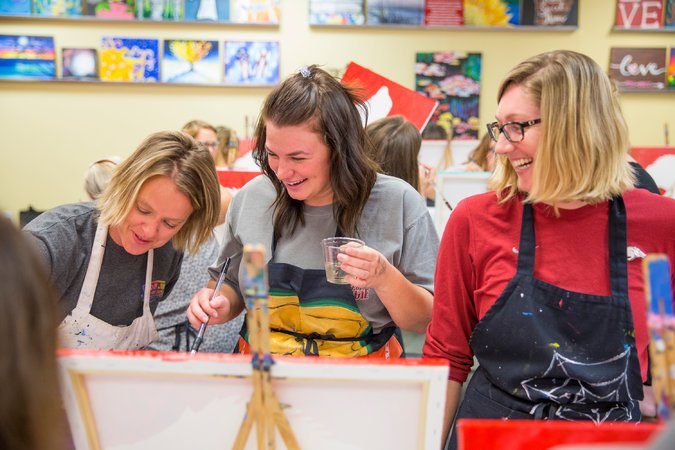
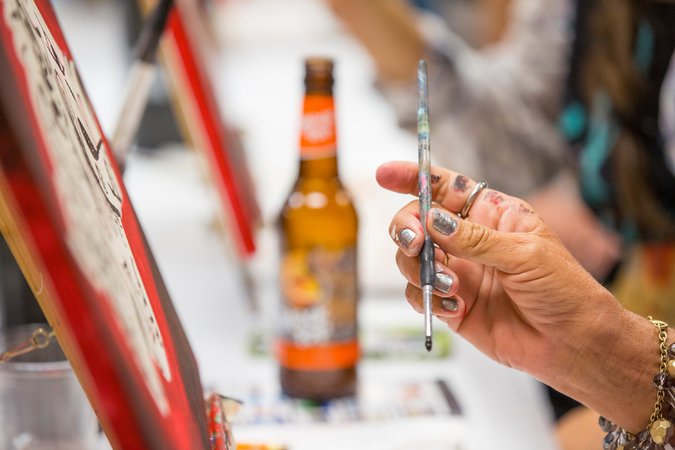
Ms. Freede of the Paint Place said her outlets tried to spice things up as well, offering “erotic” painting nights for couples. “Nothing vulgar,” she said, just paintings that might be a bit more “risqué” than those offered on a typical night.
Many locations tap into Americans’ obsession with dogs and cats by offering “Paint Your Pet” classes. Participants provide photographs of their pets in advance, which an artist sketches in pencil. Classes are then devoted to finishing the images with paint. “Those always sell out,” said Ms. Collins of the Painting With a Twist location here.
Advertisement
Continue reading the main story
Studios also try to connect painting classes to the wider world. The Bentonville group, for instance, painted a purple-hued eclipse, in honor of the solar eclipse in August.
Newsletter Sign Up
Continue reading the main story
Thank you for subscribing.
An error has occurred. Please try again later.
You are already subscribed to this email.
Shelby Nichols, the instructor for the two-hour session in Bentonville on that August Friday, stepped onto a raised platform. Wearing a headset with a microphone, she ran through a checklist of supplies: chalk, paint and brushes.
“We’re going to put the first layer on a bit thin,” she said, demonstrating on her own canvas. “Don’t glop it on!”
Ms. Nichols, 31, a professional illustrator, said she enjoyed moonlighting as a teacher for inexperienced artists. “I’m a ham,” she said, “so I like being on stage.”
As she delivered instructions, a playlist featuring the singer Bruno Mars and ’80s bands like Simple Minds provided a soundtrack. Ms. Collins surveyed the room and offered encouragement.
As the session proceeded, the mood grew increasingly relaxed, an end-of-week feeling combined with the effect of the alcohol. The sessions are as much about socializing as they are about art.
“Resist the urge to paint the middle right now,” Ms. Nichols admonished, as the participants painted a yellow oval. “Resist!”
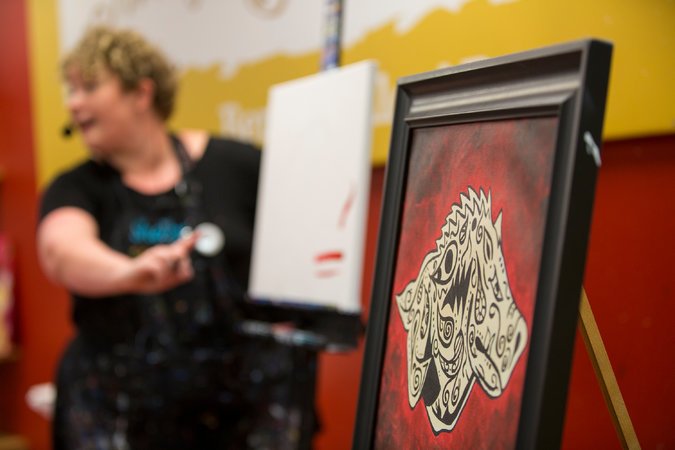
The class was a mix of couples, friends, newcomers and regulars. Gayle Jackson, 70, sipped a glass of white wine as she painted. She said she considered the drink “incidental” to the camaraderie.
“I’m a widow,” she said, “and this gets me out.” She added that it also gave her ideas for painting at home with her grandchildren.
Advertisement
Continue reading the main story
At the next table, Lexy Paryzek, 25, a human resources manager at a hospital, and her date, Jonathan Hendrix, 29, a real estate appraiser, shared a bottle of wine. Mr. Hendrix said it was their second visit; it had been his idea to bring Ms. Paryzek the first time. “It’s quality time together,” he said, adding that it was nice to have a date night that did not involve a bar.
This time, they had brought along their mothers, who sat across the table. “It’s just relaxing,” said Mr. Hendrix’s mother, Karen Hendrix, who had been before. “I’m a teacher’s aide, so I need some stress-free time.”
Local regulations governing such businesses vary. Some paint-and-sip locations allow people to bring their own alcohol, but others do not and require patrons to buy drinks on site.
Classes typically last just two hours, so it is rare for someone to get too tipsy, Ms. Collins said. The exception is on weekends, when it is sometimes obvious that a patron has been “pre-gaming,” drinking before class. In those instances, she said, she makes sure to ask if the person has a ride home. So far, she said, “we’ve never had to shut somebody off.”
Patrons have mostly been able to follow an instructor’s directions, but occasionally someone will need extra help.
Once, Ms. Collins said, a male patron planned to paint “Will you marry me?” on a canvas and present it to his girlfriend as a proposal, but he got too nervous. The instructor finished it for him.
Continue reading the main story
Article source: https://www.nytimes.com/2017/09/20/business/smallbusiness/paint-and-sip-classes.html?partner=rss&emc=rss
Speak Your Mind
You must be logged in to post a comment.